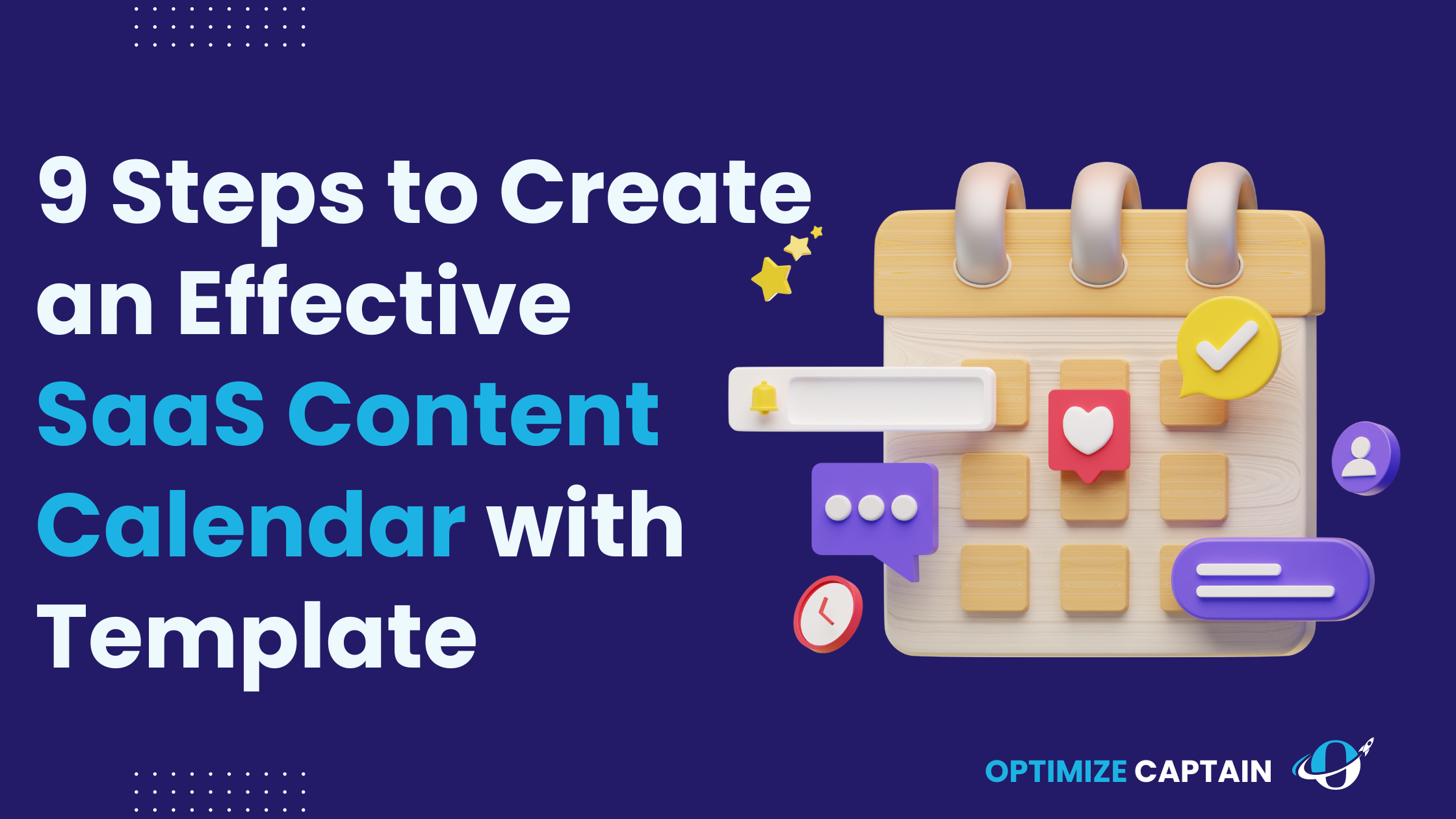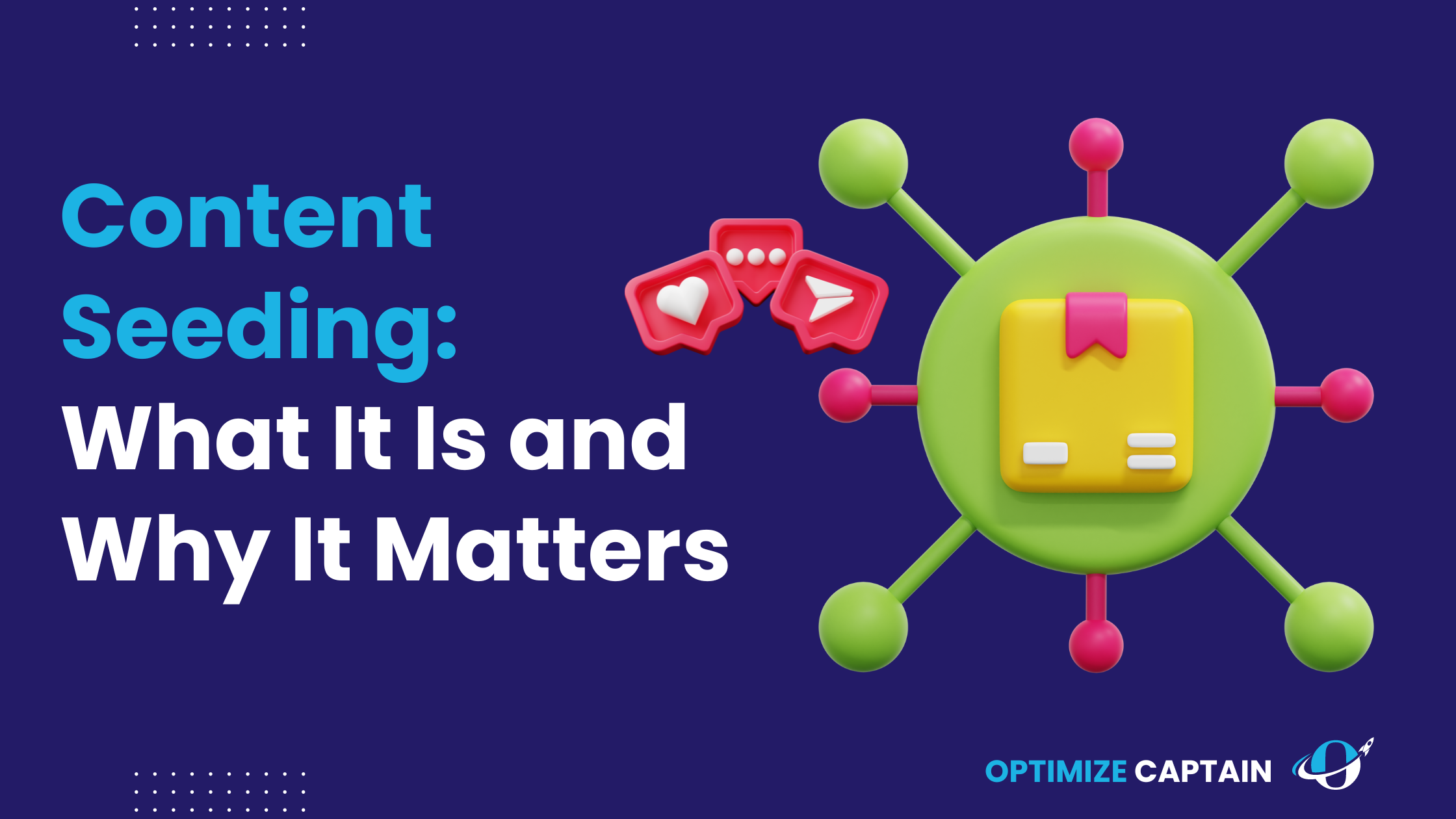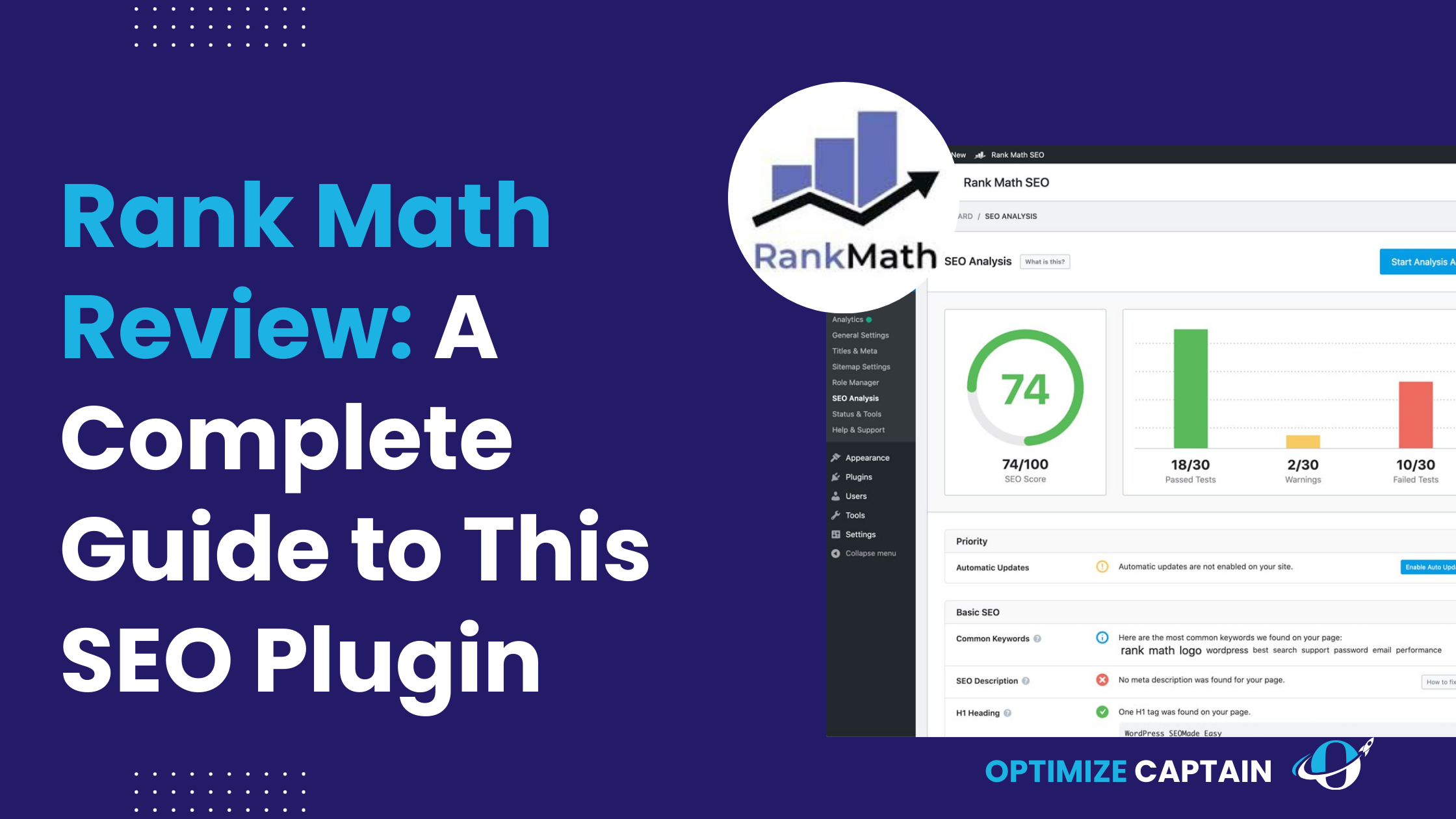Did you know that over 7.5 million blog posts are published every day? If you’re working in SaaS, this sheer content volume means you’re up against stiff competition. Without a strategic approach, your content might get lost in the noise.
So, how can you stay ahead?
By creating a content calendar. Explore how a well-planned content calendar can streamline your process and boost your results.
Understanding SaaS Content Calendar
Creating a content calendar is crucial for managing your SaaS content strategy efficiently. It helps you plan, organize, and track your content over time, ensuring consistency and relevance. But why exactly is a content calendar so important for SaaS?
Why is it Important?
- Consistency: Regularly publishing content helps build trust and authority in your industry.
- Organization: Keeps your team on the same page, avoiding last-minute scrambles.
- Efficiency: Streamlines the content creation process, saving time and resources.
- Tracking Performance: Helps monitor what works and what doesn’t, allowing for data-driven decisions.
- Audience Engagement: Ensures a steady stream of content to keep your audience engaged.
Benefits of SaaS Content Calendar
Creating a content calendar comes with many benefits, especially for SaaS companies. Here are some key advantages:
- Improved Planning and Strategy:
- Allows for long-term planning and better alignment with business goals.
- Helps in identifying content gaps and opportunities.
- Enhanced Team Collaboration:
- Facilitates communication among team members.
- Assigns clear roles and responsibilities.
- Better Time Management:
- Reduces the risk of missing deadlines.
- Allocates time effectively for different stages of content creation.
- Increased Content Quality:
- Ensures thorough research and preparation.
- Allows for multiple revisions and improvements.
- Optimized Marketing Campaigns:
- Aligns content with marketing campaigns and product launches.
- Enhances overall marketing strategy and effectiveness.
Step-by-Step Process of Creating Your First SaaS Content Calendar
Creating your first SaaS content calendar may seem daunting, but breaking it into manageable steps can simplify the process. Here’s a detailed guide:
1. Define Your Goals
Objective Setting: Start by defining what you want to achieve with your content. Are you looking to drive traffic, generate leads, or increase brand awareness? Clear objectives are the foundation of a successful content calendar.
SMART Goals: Make sure your goals are Specific, Measurable, Achievable, Relevant, and Time-bound. For instance, instead of aiming to “increase blog traffic,” set a SMART goal like “increase blog traffic by 20% over the next six months through weekly content updates.”
So here’s the deal: If you don’t set clear goals, your content efforts will be scattered and ineffective.
Align with Business Goals: Ensure your content goals align with broader business objectives. For example, if your SaaS company aims to expand into a new market, your content should support this by addressing relevant topics and challenges.
Document Your Goals: Write down your goals and share them with your team. Documenting goals ensures everyone is on the same page and working towards the same objectives.
2. Understand Your Audience
Buyer Personas: Develop detailed profiles of your ideal customers. Understand their demographics, job roles, pain points, preferences, and content consumption habits. Gather this information through surveys, interviews, and analytics.
Content Preferences: Determine the content that resonates most with your audience—blog posts, videos, infographics, podcasts, etc. Look at your most successful past content and see what formats performed best.
You might wonder, “How do I get to know my audience so well?” Let me explain.
Customer Journey Mapping: Map out the stages of your customer journey—awareness, consideration, and decision. Identify your audience’s questions and challenges at each stage, and tailor your content to address these.
Competitor Analysis: Analyze your competitors’ content to see what topics and formats they’re using successfully. This can provide insights into what your audience might be looking for.
Social Listening: Monitor social media channels, forums, and industry groups to understand the conversations and trends that matter to your audience. This can help you create timely and relevant content.
3. Conduct a Content Audit
Inventory Check: Review your existing content. List all your published content, including blog posts, videos, eBooks, and social media updates. Use a spreadsheet to track this.
Performance Metrics: Analyze content performance using metrics like traffic, engagement, conversion rates, and SEO rankings. Tools like Google Analytics, SEMrush, and Ahrefs can provide valuable data.
Now you know the importance of understanding what you already have.
Identify Gaps: Look for content gaps—topics relevant to your audience but not covered by your existing content. Also, identify content that needs updating or improvement.
Repurpose Content: Identify high-performing content that can be repurposed into different formats. For example, a popular blog post can be turned into a video, infographic, or webinar.
Content Lifecycle: Consider the lifecycle of your content. Evergreen content remains relevant over time, while seasonal content is timely and specific to certain periods. Balance both types in your calendar.
4. Brainstorm Content Ideas
Keyword Research: Use tools like Ahrefs, SEMrush, and Google Keyword Planner to identify high-volume keywords relevant to your SaaS. Focus on long-tail keywords with lower competition but high relevance to your audience.
Content Topics: Based on keyword research and audience needs, list potential topics. Ensure the topics align with your goals and address the customer journey stages.
Let me explain the power of brainstorming: It’s about quantity first, quality later.
Collaborative Brainstorming: Involve your team in the brainstorming process. Different perspectives can lead to more diverse and creative ideas. Use brainstorming sessions to generate a large pool of ideas.
Content Pillars: Identify key themes or pillars around your content. These pillars should reflect your core expertise and business goals. For example, a SaaS company offering project management software might have pillars like productivity, team collaboration, and project management best practices.
Content Types: Decide on the types of content you will create—blog posts, videos, podcasts, case studies, eBooks, etc. Diversifying content types can help reach a broader audience and keep your content strategy dynamic.
5. Create a Content Plan
Editorial Calendar: Outline your content plan on a monthly or quarterly basis. Include key dates, topics, formats, and distribution channels. Use tools like Google Calendar, Trello, or Asana to create and manage your editorial calendar.
Content Workflow: Define the stages of content creation—from ideation to publication—and assign responsibilities. A typical workflow might include ideation, research, writing, editing, design, approval, and publication.
So here is the deal: A content plan keeps everyone aligned and focused.
Set Deadlines: Assign specific deadlines for each stage of the content creation process. Ensure these deadlines are realistic and account for potential delays. Deadlines help keep the process on track and ensure timely publication.
Content Briefs: Create detailed content briefs for each piece of content. A brief should include the topic, target audience, goals, key messages, keywords, format, and distribution plan. This ensures everyone involved understands the content’s purpose and requirements.
Review and Approval Process: Establish a review and approval process to ensure content quality. This might involve peer reviews, editorial reviews, and final approval from key stakeholders.
6. Use the Right Tools
Content Management System (CMS): Choose a CMS that fits your needs, such as WordPress, HubSpot, or Contentful. A good CMS helps streamline content creation, organization, and publication.
Collaboration Tools: Use tools like Trello, Asana, or Monday.com to manage tasks, deadlines, and team collaboration. These tools provide transparency and keep everyone on the same page.
Analytics Tools: Implement tools like Google Analytics, SEMrush, and Ahrefs to track content performance. These tools provide insights into what’s working and what’s not, allowing for data-driven decisions.
You might be wondering which tools are the best. Now you know.
SEO Tools: Use SEO tools to optimize your content for search engines. Tools like Yoast SEO, Moz, and Screaming Frog can help with keyword optimization, technical SEO, and site audits.
Social Media Management Tools: Tools like Hootsuite, Buffer, and Sprout Social can help you schedule and manage your social media posts, ensuring consistent promotion of your content.
Design Tools: For creating visuals, use tools like Canva, Adobe Spark, or Visme. High-quality visuals can enhance your content and make it more engaging.
7. Develop a Publishing Schedule
Consistency is Key: Decide how often you’ll publish content—daily, weekly, or bi-weekly. Consistency helps build trust with your audience and improves SEO performance.
Balanced Schedule: Ensure a mix of content types and topics to keep your audience engaged. For example, alternate between blog posts, videos, and infographics, and cover a range of topics within your industry.
Let me explain: Consistency builds trust and keeps your audience coming back.
Seasonal and Evergreen Content: Balance seasonal content (timely, relevant to specific events or trends) with evergreen content (timeless, continuously relevant). This ensures your content remains valuable over time.
Distribution Plan: Plan how you will promote each piece of content. Include channels like social media, email marketing, SEO, and paid advertising. Effective distribution is crucial for reaching your audience.
Content Repurposing: Plan to repurpose content across different formats and channels. For example, turn a blog post into a video, an infographic, and a series of social media posts to maximize its reach and impact.
8. Monitor and Adjust
Performance Review: Regularly review your content’s performance against your goals. Use analytics tools to track metrics like traffic, engagement, conversion rates, and SEO rankings.
Iterative Improvements: Be ready to make adjustments based on what’s working and what’s not. Use A/B testing to experiment with different headlines, formats, and CTAs to optimize performance.
Now you know: Monitoring is about continuous improvement.
Feedback Loop: Collect feedback from your audience, team, and stakeholders. Use this feedback to refine your content strategy and improve future content.
Stay Updated: Keep up with industry trends and updates. The digital landscape is constantly evolving, and staying informed helps you adapt your content strategy accordingly.
Content Refresh: Periodically update and refresh older content to keep it relevant and optimized for current SEO standards. This can help maintain and even improve your content’s performance over time.
9. Promote Your Content
Distribution Channels: Promote your content using social media, email marketing, SEO, and paid advertising. Each channel has its strengths and can help you reach different segments of your audience.
Engage with Your Audience: Respond to comments, engage with your audience on social media, and build a community around your content. Engagement helps build relationships and encourages loyalty.
So here’s the deal: Promotion is as important as creation.
Influencer Partnerships: Collaborate with influencers in your industry to amplify your content’s reach. Influencers can help you tap into new audiences and add credibility to your content.
Guest Posting: Write guest posts for reputable industry blogs and websites. This helps with SEO, establishes your authority, and expands your reach.
Repurpose for Different Platforms: Adapt your content for different platforms and formats. For example, a blog post can be turned into a LinkedIn article, a Twitter thread, or a podcast episode to reach different audiences.
By following these detailed steps, you’ll be well on your way to creating a comprehensive and effective content calendar for your SaaS company.
SaaS Content Calendar Template
Creating a content calendar can be simplified with a template. Here’s a basic structure to get you started:
| Date | Content Type | Topic | Author | Keywords | Distribution Channels | Status |
| YYYY-MM-DD | Blog Post | Topic Example | Author | Keyword Example | Social Media, Email | Draft |
| YYYY-MM-DD | Video | Topic Example | Author | Keyword Example | YouTube, Website | Planned |
| YYYY-MM-DD | Infographic | Topic Example | Author | Keyword Example | Pinterest, Instagram | Review |
| YYYY-MM-DD | eBook | Topic Example | Author | Keyword Example | Email, Landing Page | Finalized |
| YYYY-MM-DD | Webinar | Topic Example | Author | Keyword Example | LinkedIn, Website | Scheduled |
| YYYY-MM-DD | Podcast | Topic Example | Author | Keyword Example | Spotify, Apple Podcast | Recorded |
| YYYY-MM-DD | Case Study | Topic Example | Author | Keyword Example | Website, Newsletter | Draft |
| YYYY-MM-DD | Social Media | Topic Example | Author | Keyword Example | Facebook, Twitter | Posted |
| YYYY-MM-DD | Whitepaper | Topic Example | Author | Keyword Example | Email, Website | Planned |
Template Details:
- Date: When the content will be published or scheduled.
- Content Type: The format of the content (e.g., blog post, video, infographic).
- Topic: The specific subject matter of the content.
- Author: The person responsible for creating the content.
- Keywords: Targeted keywords for SEO optimization.
- Distribution Channels: Platforms where the content will be shared.
- Status: Current stage of the content (e.g., draft, planned, review, finalized, scheduled, posted, recorded).
This template helps you organize your content creation process, ensuring that every piece of content has a clear purpose, responsible party, and planned distribution strategy.
Top 3 Content Calendar Templates to Get Started
1- HubSpot’s Content Calendar Template:

Features: Comprehensive and easy to use, this template integrates seamlessly with Google Calendar, allowing for streamlined scheduling and management. It includes fields for content title, author, due date, publish date, status, and more, making it easy to keep track of all your content details in one place.
Best for: It offers detailed planning and tracking, making it ideal for teams that require a robust solution to manage their content strategy efficiently.
Why It’s a Great Choice: HubSpot’s template is perfect for those who need an all-in-one tool that can handle the intricacies of content planning while also providing the ability to integrate with other tools and platforms.
2- Trello Content Calendar:

Features: Trello offers visual boards with easy drag-and-drop functionality, allowing teams to visualize their workflow. You can create cards for each piece of content, add checklists, due dates, and attachments, and move them through stages from ideation to publication.
Best For: Teams looking for a collaborative tool that supports real-time updates and teamwork. Trello’s flexibility and visual approach make it easy for teams to stay organized and on track.
Why It’s a Great Choice: Trello’s board-based system is excellent for visual thinkers and collaborative teams. Its integration capabilities with other tools like Slack, Google Drive, and more enhance its usability.
3- Google Sheets Content Calendar:

Features: Simple, customizable, and accessible, Google Sheets allows you to create a content calendar tailored to your specific needs. It’s easy to share with your team, and you can include fields for dates, content types, topics, keywords, and more.
Best For: Beginners and small teams who need a straightforward, no-fuss solution to start organizing their content. Google Sheets is also great for those who want to customize their calendar without needing advanced technical skills.
Why It’s a Great Choice: Google Sheets is incredibly versatile and easy to use, making it perfect for those who need a simple yet effective tool. Its cloud-based nature ensures that everyone can access and edit the calendar in real-time, enhancing collaboration.
Conclusion
Creating an effective content calendar for your SaaS can transform your content strategy, making it more organized, efficient, and impactful. By aligning your content with the customer journey, balancing seasonal and evergreen content, leveraging data for planning, and building a structured workflow, you’ll be well on your way to consistent, high-quality content that resonates with your audience and achieves your business goals.
So here’s the deal: Start your content calendar today and watch your SaaS content strategy thrive.
SaaS Content Calendar FAQs
1- How often should I update my content calendar?
Review and update your content calendar at least once a month to ensure it stays relevant and aligned with your goals.
2- What tools are best for creating a content calendar?
Tools like Trello, Asana, and Google Sheets are popular for their ease of use and collaborative features.
3- Can a content calendar help with SEO?
Yes, a content calendar can significantly improve your SEO efforts by planning and optimizing your content around targeted keywords.





